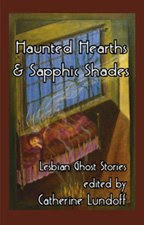New writers are often admonished to show instead of tell, but that's where the advice seems to end. So I'm going to give examples.
Telling:
Everyone at the restaurant thought Jim was hot.
Showing:
A short brunette seated on the red leather settee in the restaurant's crowded foyer forgot what she was digging for in her purse and ran a hand over her hair when Jim walked in. Over by the bar, an expensive blond thrust her hip out. Her eyebrow rose, an expectant invitation. Her lips curved up at the corners, and then parted slightly, showing a hint of even white teeth. Across the restaurant, neither the slim Latino waiter nor the two men at the table noticed as water cascaded from the busboy's pitcher into an overflowing glass and spread across the white linen tablecloth. They watched Jim.
The restaurant hostess leaned to see around the patron in front of her at the podium. She clasped a menu to her chest, lowered her chin, and watched with flitting glances as Jim sauntered through the crowd. "Can I help you?" she blurted when he reached the podium. Color flooded into her cheeks.
Got it? Probably.
If you write third person omni POV, you can get away with telling people's thoughts (not that you should, but you can). But if you write first person POV, you have to show what the characters other than your POV character think and feel by their actions and body language, because those are the clues your POV character is going to use to interpret how s/he perceives the other character's thoughts and feelings. That's right - perceives. Your POV character can only guess what's going on in the other character's heads. S/he will never know for sure.
(Just like you can't know anyone's thoughts in real life. You can guess, but you don't know.) What looks like anger might be embarassment, but unless someone articulates their real emotion, your POV character won't know. And who says, "I'm not angry, I'm worried that you came so close to guessing my deep, dark secret that's been haunting me for years?"
BTW - you can't get away with stuffing your dialog with emotional cues. No real person says, "I'm feeling really vulnerable right now," unless they're a manipulative, over-self-analyzing putz. In a book, it's clunky dialog. Show vulnerability, show fear, show rage. Never tell it.
Now an exercise:
You're a high school senior. As an early graduation present to yourself, you spent the evening at a party at the local pot dealer's house. You drank lots of beer, smoked pot, and screwed someone you just met and never expect to see again. While still under the influence, you drove home. Three hours past your curfew, you stumbled into your parent's house. Your Dad was waiting in the living room.
Now - before a word passes between you and Dad, how do you know if you're merely busted for breaking curfew, if Dad suspects you were up to more but can only bust you for curfew violation, or if Dad knows everything and is about to kill you?
Think about the message his body language is sending. How is he standing? If he's disappointed, his shoulders are slumping, but if he's ready to tell you off, they're back. What are his hands doing? Are they in his pockets, or balled into fists? Are his lips pulled into a tight line? And think about his eyes. Most expression isn't truly in the eyes. It's around them.
Now show me those cues so that I know exactly how angry he is without having to be told, "Dad was ready to kill me." Write it. Don't use a word of dialog. Don't use the word angry, or any word like it.
Go. Write.
Thursday, August 02, 2007
Subscribe to:
Post Comments (Atom)















.jpg)











No comments:
Post a Comment